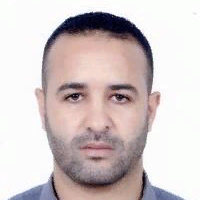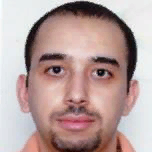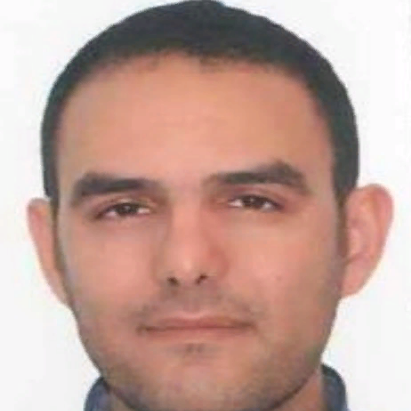International Journal of Image, Graphics and Signal Processing (IJIGSP)
IJIGSP Vol. 9, No. 10, 8 Oct. 2017
Cover page and Table of Contents: PDF (size: 1465KB)
Author(s)
Index Terms
Heart sound, phonocardiogram modeling, cyclostationarity, cyclic statistics, Gabor kernel, heart diseases
Abstract
Acoustic vibrations of the heart in time domain correspond to phonocardiogram (PCG) signal. A PCG signal, in the healthy case, consists of two fundamental sounds s1 and s2 produced by the mechanical functioning of the heart. Abnormalities in the heart valves correspond to other cardiac sounds than s1 and s2. This makes PCG signal a valuable tool related to the track of heart diseases. Actually, the characterization and the analysis of PCG signals is being a fertile area of study and investigation. However, most of the topics which treated this area of research focused only on time-frequency analysis, without exploiting the periodic character of PCG signal due to the limitations of the PCG modeling. In this work, we propose a coherent mathematical model for PCG signals based on cyclostationarity and Gabor kernel. The motivation behind is to define a framework, utilizing cyclic statistic due to noise robustness, for a full description of PCG signals, which leads to an easy and efficient early identification of certain heart abnormalities. The validation of the proposed model and its capacity to reflect the heart functioning is tested over synthetic and real data sets.
Cite This Paper
A.Choklati, K. Sabri, M. Lahlimi," Cyclic Analysis of Phonocardiogram Signals", International Journal of Image, Graphics and Signal Processing(IJIGSP), Vol.9, No.10, pp.1-11, 2017. DOI: 10.5815/ijigsp.2017.10.01
Reference
[1]W. A. Gardner, Introduction to Random Processes: with applications to signals and systems, Macmillan Publishing Company.New York, 1985.
[2]H. Koymen, B.K. Altay, Y. Z. Ider, A study of prosthetic heart valve sounds, IEEE Transactions on, Biomedical Engineering (11), 853-863, (1987).
[3]W. A. Gardner, Two alternative philosophies for estimation of the parameters of time-series, IEEE Transactions on Information Theory, 37(1), 216-218, (1991).
[4]W. A. Gardner, Cyclostationarity in communications and signal processing, Statistical Signal Processing, Inc Yountville, CA 1994.
[5]A. Baykal, Y. Z. Ider and H. Köymen, Distribution of aortic mechanical prosthetic valve closure sound model parameters on the surface of the chest, IEEE Transactions on, Biomedical Engineering, 42(4), 358-370, (1995).
[6]H. P. Sava, and J. T. E. McDonnell, Modified forward-backward over determined Prony's method and its application in modelling heart sounds, IEE Proceedings-Vision, Image and Signal Processing, 142(6), 375-380, (1995).
[7]H. Sava, P. Pibarot, and L. G. Durand, Application of the matching pursuit method for structural decomposition and averaging of phonocardiographic signals, Medical and Biological Engineering and Computing, 36(3), 302-308, (1998).
[8]X. Zhang, L. G. Durand, L. Senhadji, H. C. Lee, and J. L. Coatrieux, Analysis-synthesis of the phonocardiogram based on the matching pursuit method, IEEE Transactions on Biomedical Engineering, 45(8), 962-971, (1998).
[9]T. S. Leung, P. R. White, J. Cook, W. B. Collis, E. Brown and A. P. Salmon, Analysis of the second heart sound for diagnosis of paediatric heart disease, IEE Proceedings-Science, measurement and technology, 145(6), 285-290, (Nov,1998).
[10]J. Xu, L. Durand, P. Pibarot, Nonlinear transient chirp signal modeling of the aortic and pulmonary components of the second heart sound, IEEE Transactions on, Biomedical Engineering, 47(10), 1328-1335, (2000).
[11]J. Xu, L. Durand, P. Pibarot, Extraction of the aortic and pulmonary components of the second heart sound using a nonlinear transient chirp signal model, IEEE Transactions on, Biomedical Engineering, 48(3), 277-283, (2001).
[12]S. M. Debbal, and F. Bereksi-Reguig, Time-frequency analysis of the first and the second heartbeat sounds, Applied Mathematics and Computation, 184(2), 1041-1052, (2007).
[13]K. Sabri, M. El Badaoui, F. Guillet, A. Belli, G. Millet, and J. B. Morin, Cyclostationary modeling of ground reaction force signals, Signal Processing, vol. 90, no. 4, pp. 1146–1152, April 2010.
[14]A. Almasi, M. B. Shamsollahi, and L. Senhadji, A Dynamical Model for Generating Synthetic Phonocardiogram Signals, In Engineering in Medicine and Biology Society, EMBC, 2011 Annual International Conference of the IEEE (pp. 5686-5689), IEEE, (August, 2011).
[15]P. Bentley, G. Nordehn, M. Coimbra, and S. Mannor, The PASCAL Classifying Heart Sounds Challenge 2011 (CHSC 2011) Results, http//www.peterjbentley.com/heartchallenge/index.html
[16]K. Sabri, Cyclic sparse greedy deconvolution, International Journal of Image, Graphics and Signal Processing, 4(12), 1, 2012.
[17]A. Goshvarpour, A. Goshvarpour, Recurrence plots of heart rate signals during meditation, International Journal of Image, Graphics and Signal Processing, 4(2), 44, (2012).
[18]A. Almasi, M. B. Shamsollahi, and L. Senhadji, Bayesian denoising framework of phonocardiogram based on a new dynamical model, IRBM, 34(3), 214-225, (2013).
[19]M. Jabloun, P. Ravier, O. Buttelli, R. Lédée, R. Harba, and L. D. Nguyen, A generating model of realistic synthetic heart sounds for performance assessment of phonocardiogram processing algorithms, Biomedical Signal Processing and Control, 8(5), 455-465, (2013).
[20]A. Napolitano, Cyclostationary Signal Processing and its Generalizations, IEEE Statistical Signal Processing Workshop, Gold Coast, Australia, June 29, 2014.


